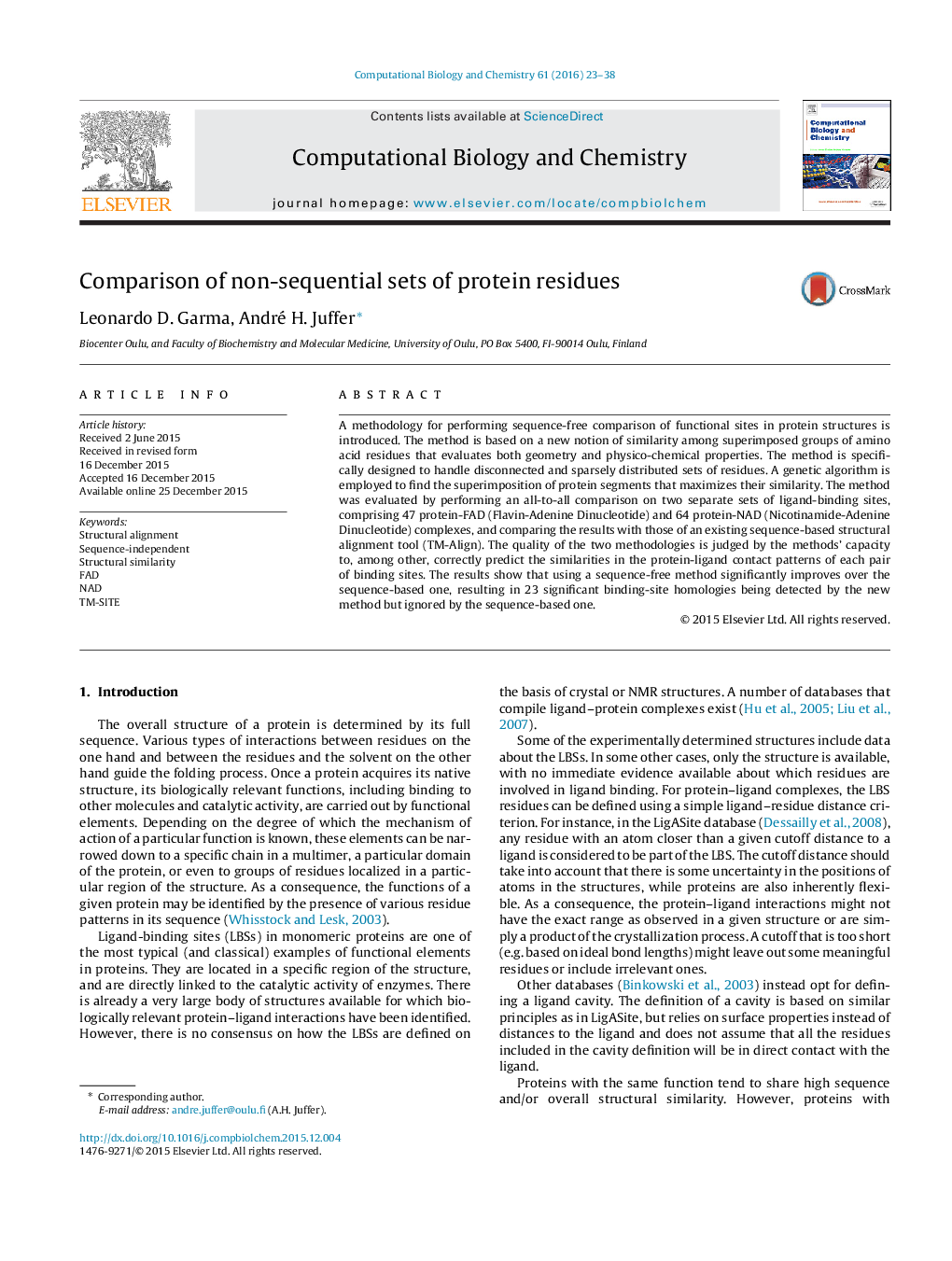| Article ID | Journal | Published Year | Pages | File Type |
|---|---|---|---|---|
| 14928 | Computational Biology and Chemistry | 2016 | 16 Pages |
•The vast majority of binding sites for small ligands are shown to be set of sparsely distributed amino-acids.•A method for the comparison of non-sequential protein segments based on a genetic algorithm is introduced.•The sequence-independent method presented is shown to be better suited than sequence based approaches for comparing ligand-binding sites.
A methodology for performing sequence-free comparison of functional sites in protein structures is introduced. The method is based on a new notion of similarity among superimposed groups of amino acid residues that evaluates both geometry and physico-chemical properties. The method is specifically designed to handle disconnected and sparsely distributed sets of residues. A genetic algorithm is employed to find the superimposition of protein segments that maximizes their similarity. The method was evaluated by performing an all-to-all comparison on two separate sets of ligand-binding sites, comprising 47 protein-FAD (Flavin-Adenine Dinucleotide) and 64 protein-NAD (Nicotinamide-Adenine Dinucleotide) complexes, and comparing the results with those of an existing sequence-based structural alignment tool (TM-Align). The quality of the two methodologies is judged by the methods’ capacity to, among other, correctly predict the similarities in the protein-ligand contact patterns of each pair of binding sites. The results show that using a sequence-free method significantly improves over the sequence-based one, resulting in 23 significant binding-site homologies being detected by the new method but ignored by the sequence-based one.
